Tesco breakfast porridge pots are surprisingly good. Speaking of supermarkets, there is a progressive evolution here. I recall in the 1990s, when a lot of the small chicken shops closed down because Coles and Woolworths started offering hot roast chicken.
When I came to London in 2000 it was novel that the supermarkets offered takeaway sandwiches of the chicken and egg variety,. Still more expensive than doing it at home but remarkably convenient.
What we’ve seen in supermarkets at home has been the expansion of the take-home instant dinner meal. Here at Tesco’s they have expanded that to the next level.
We see two tears of dinner meal package deals. On the lower tier we see the equivalent of a pasta and a desert and a take-home soft drink.
On the higher-tier we see take-home meals for two that have a roast mains to microwave, a side of vegetables, a desert, and an alcoholic beverage.
The population of greater Manchester is 3 million. In 1992 Sydney was competing with Manchester for the Olympics. At the time, Manchester was considered to have high unemployment and rainfall. (I didn’t see much evidence of either thankfully.)
Manchester today is famous for football, music (Oasis, The Verve, Chemical Brothers, Simply Red) and the world’s longest running soap, Coronation Street.
The Manchester science industry Museum. The building was built 200 years ago to store cotton brought in my the first inter-city train from Liverpool.
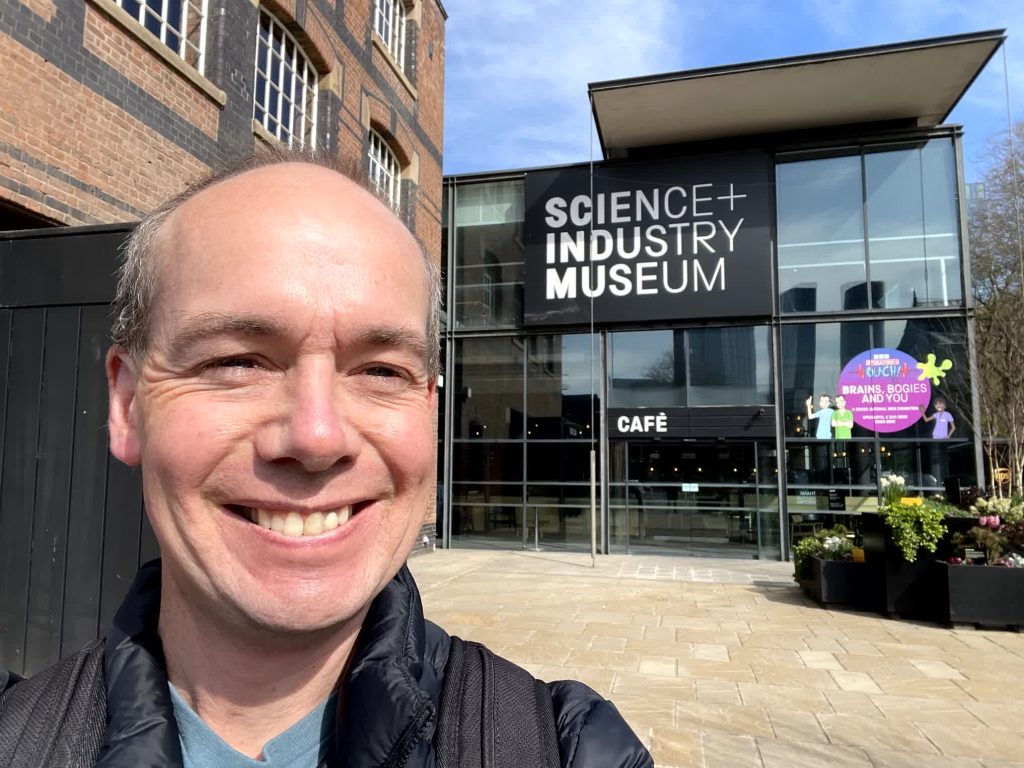
The Museum was under construction and still running due to changing the roof, and reconfiguring the displays, away from the aeroplane museum and back to an 1850s train station replica.
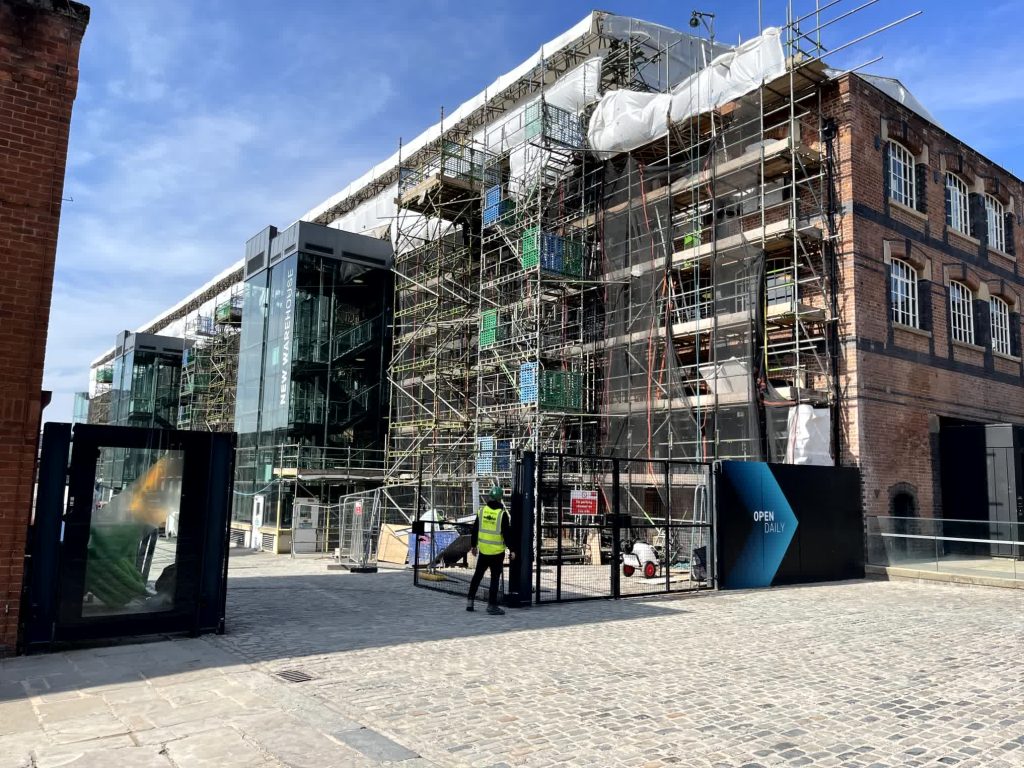
Manchester grew from a collection of towns that weaved cotton in 1800 to an Industrial City in 1895 (they claim the first City that grew out of the Industrial Revolution.) The Museum had a collection of Cotton spinning and weaving machines.
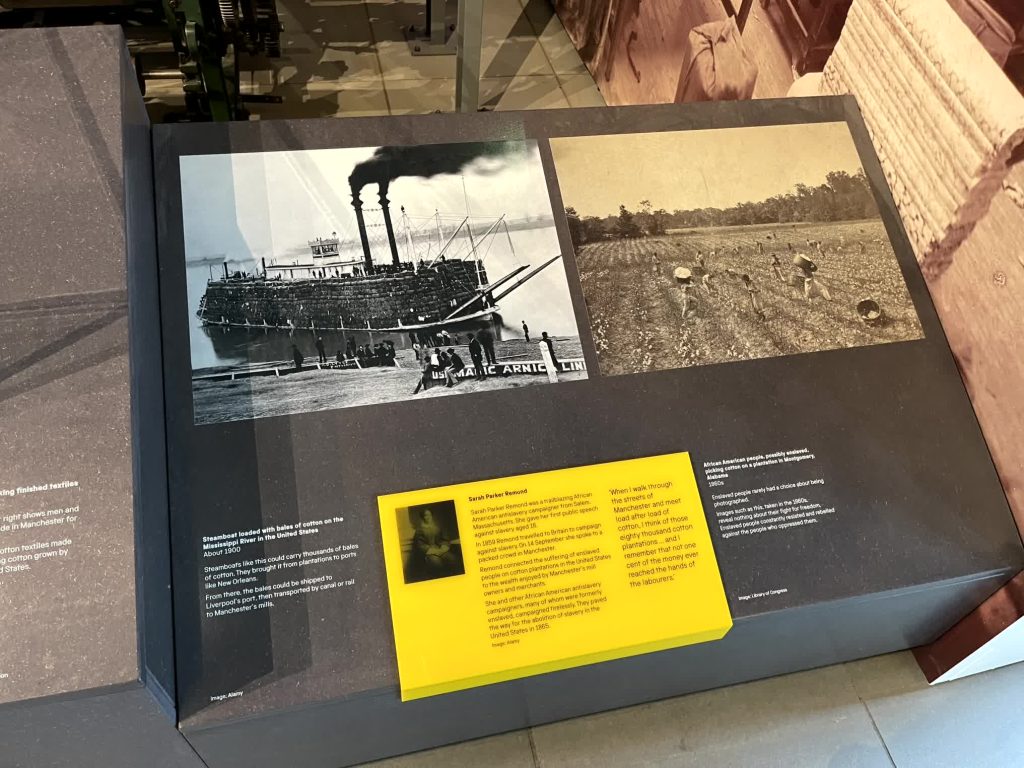
The presenter says that Manchester’s industrial wealth needs to acknowledge the slave labour of African people receiving no pay in the Southern US.
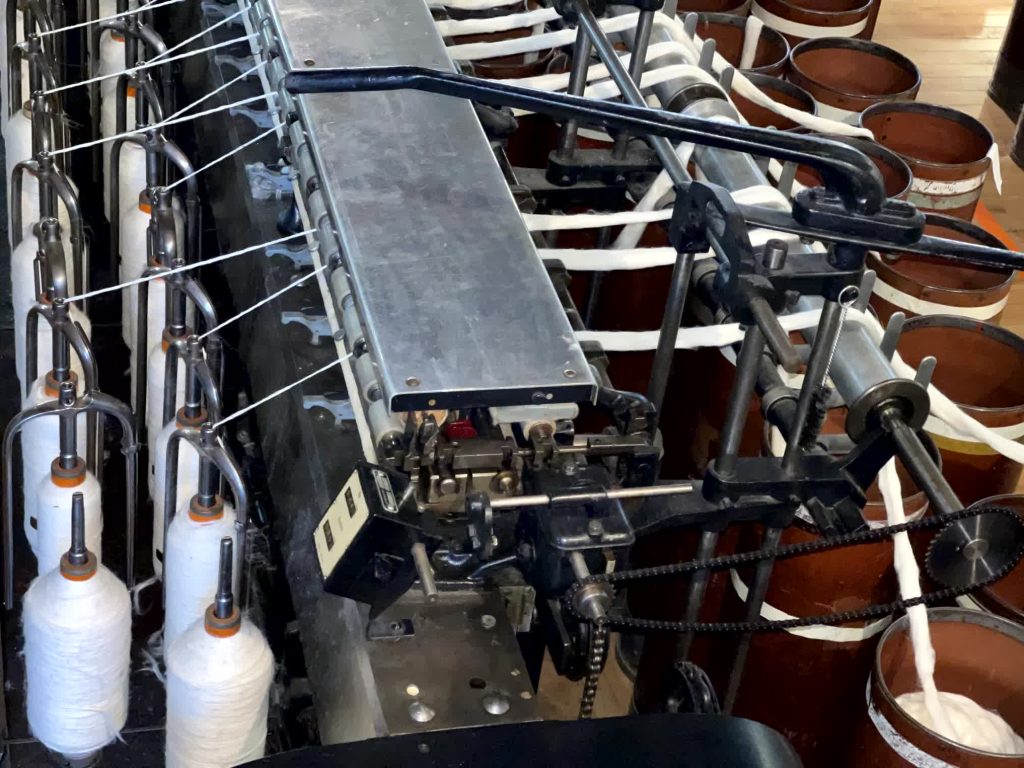
We see a Slumming machine then a Roving machine to make cotton thread stronger.
We could see the Roving machine rotating parts could injure a hand and the belts could scalp a person.
We saw a spinning machine – one woman worked two at a time, on opposite sides.
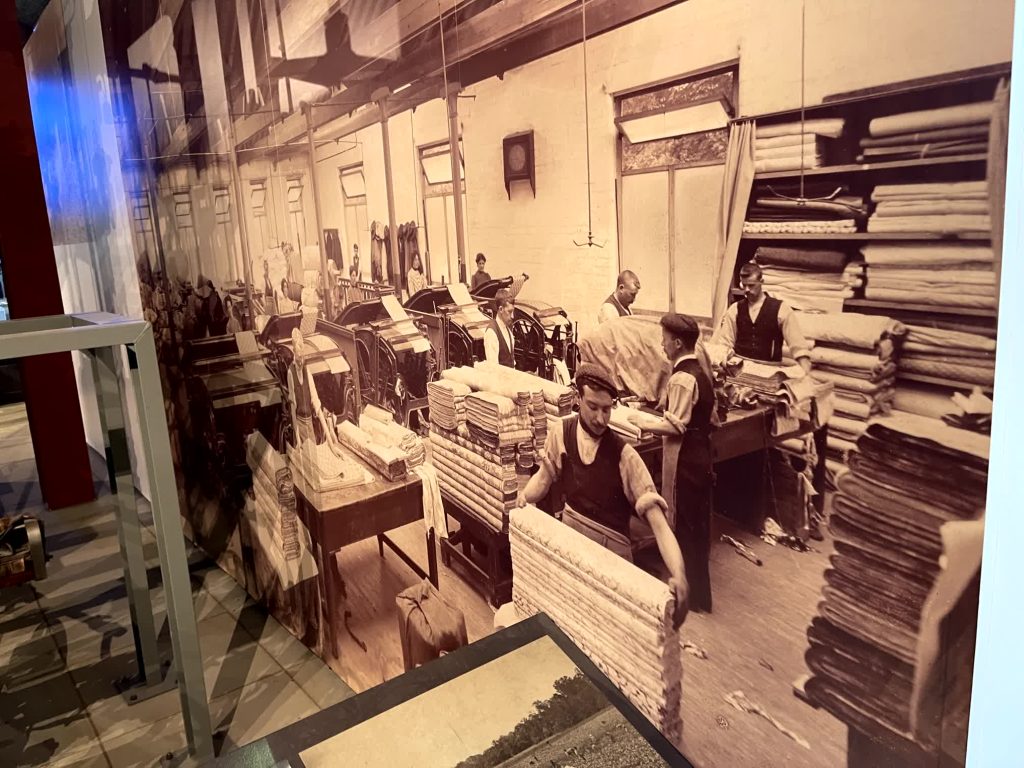
Workers gathered in the 1850s around coffee stalls before 6am, waiting for the shift to start. A shuttle that flew off a machine could take out a tooth or smash a window.
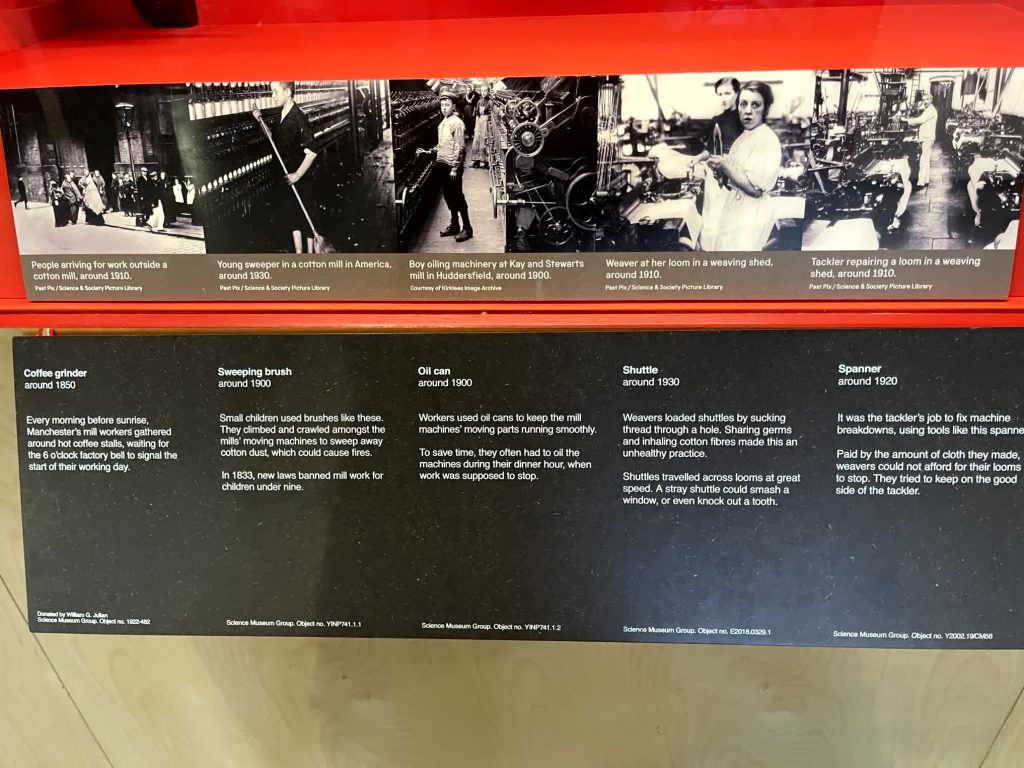
They showed looms doing patterns.
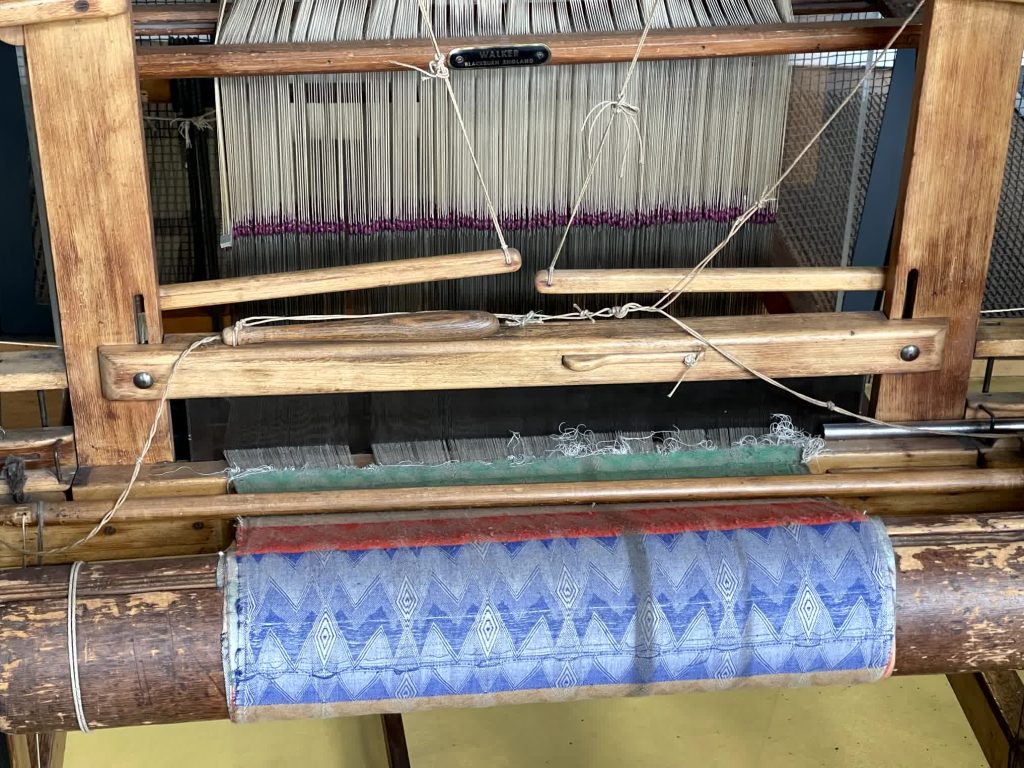
There was overcrowding, filth and grime. They had a lack of clean water. Engineers and campaigners acted to bring protests and projects to bring clean water to the city.
In Manchester the workers (trade unions ) fought for weekends, health and safety and education for children.
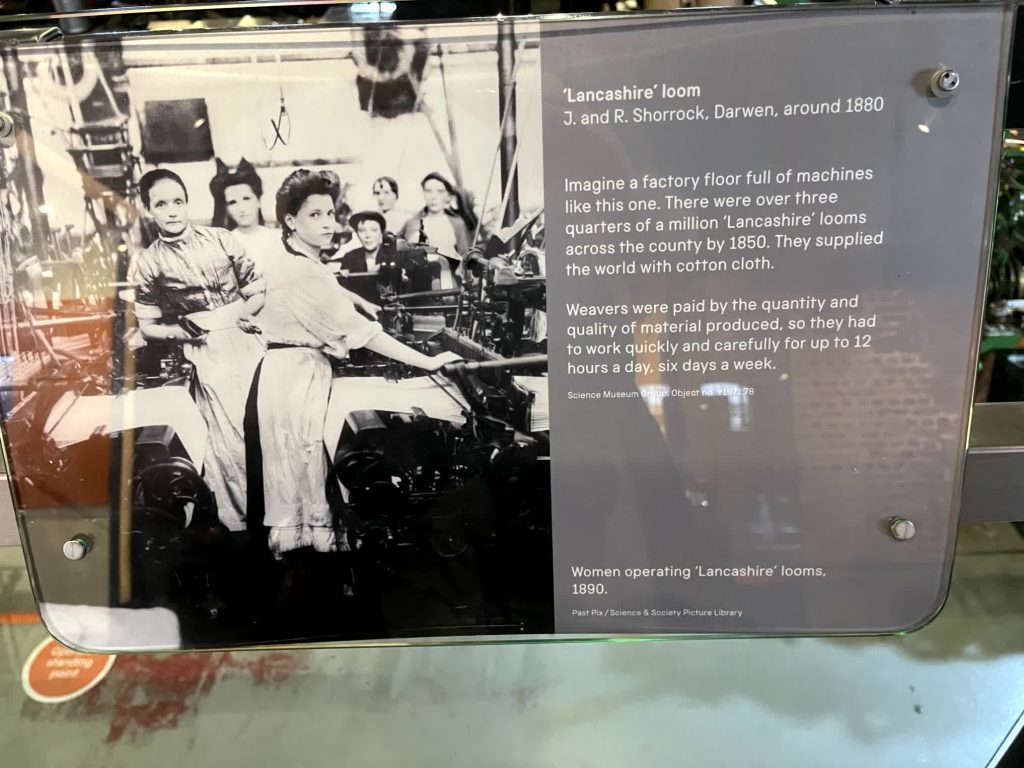
A treat – the first pattern-sewing machine – a 1700s-Era Jacquard Loom – one that Ada Lovelace and Charles Babbage would have known and imitated.
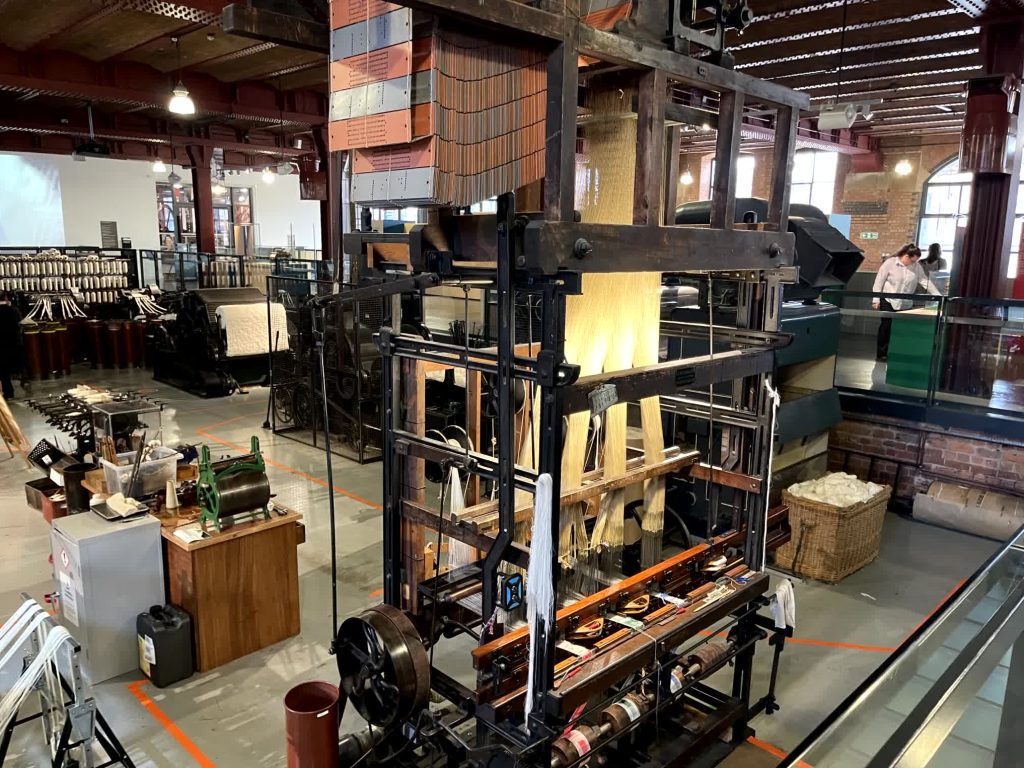
I’m here to see the Manchester Baby. (“Munchusta Bebi”). The first “modern” stored-program Computer. I have no philosophical qualms about calling this a computer. (This differs from the ENIAC in that the ENIAC had no memory – and had to be wired up for each program.)
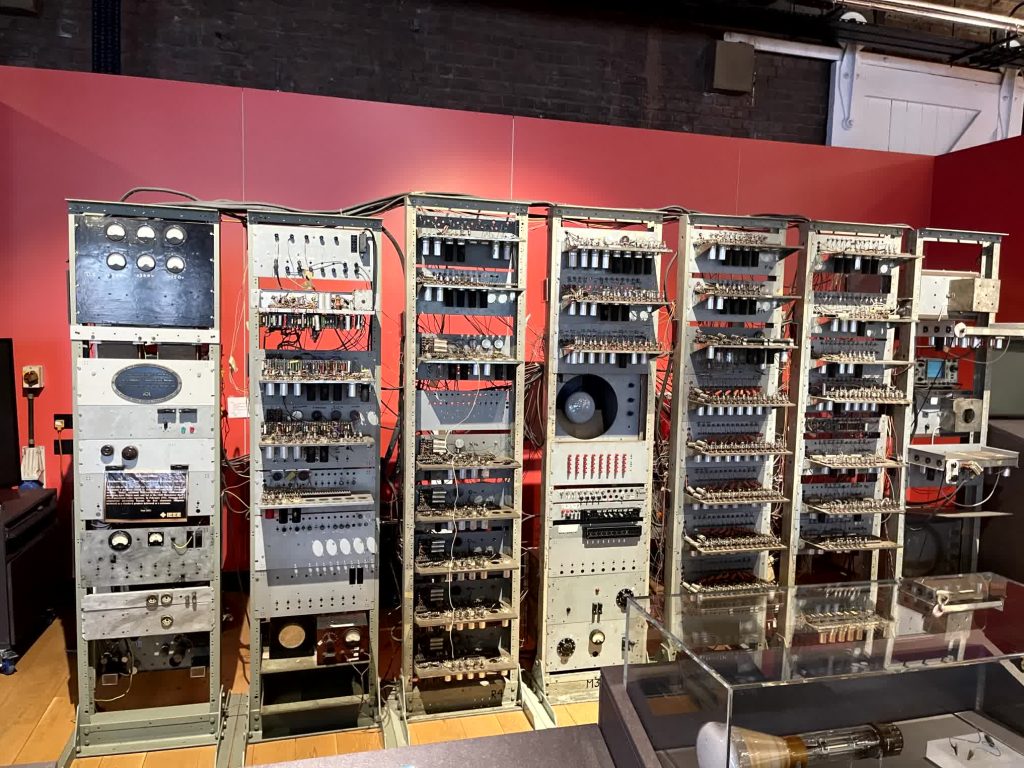
Its storage was on Cathode Ray tubes. (This technology was quickly superseded.)
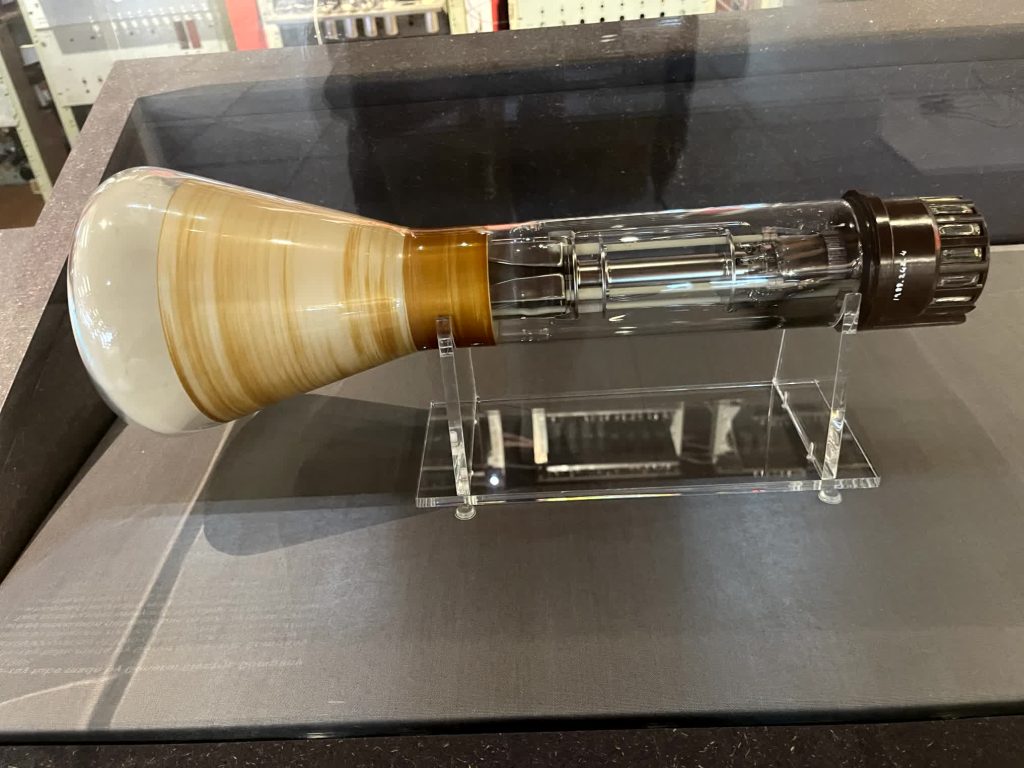
It was built by students from Manchester University – who went on to start the UK’s first Computer Science department.
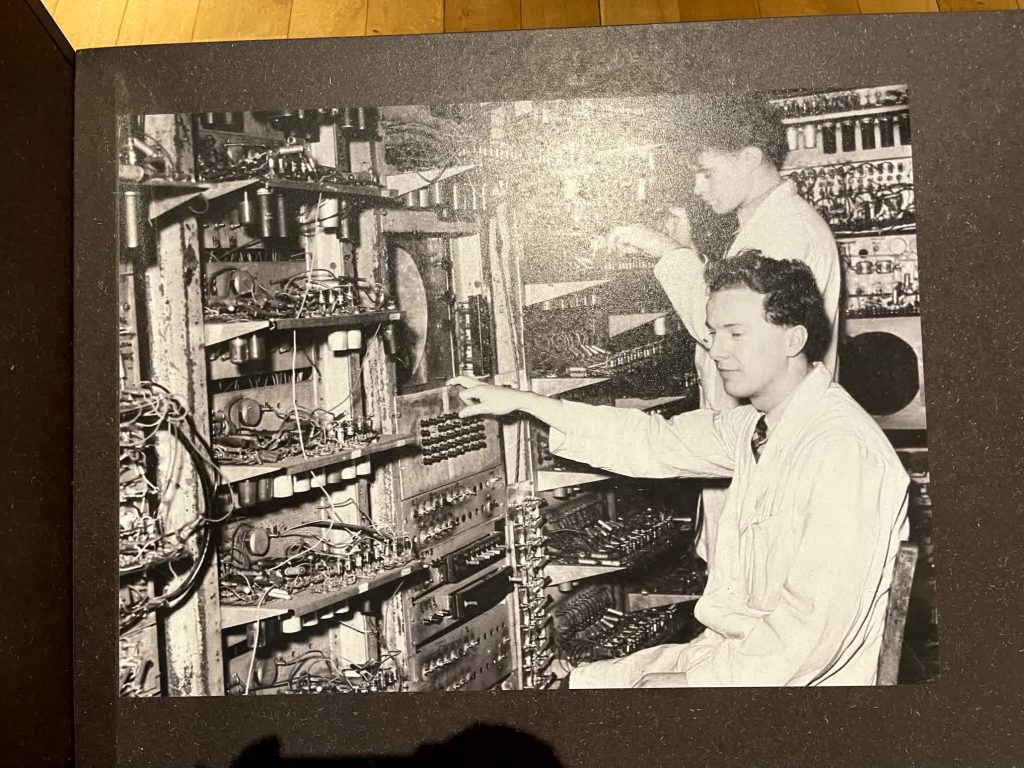
The cotton mill machines (hundreds of thousands in Manchester) drove a demand for Engineers. Engineers who had a desire to improve and automate. Manchester became a place of machined and precise parts. They build cutting machines for building precise gears – and machines of increased accuracy (Joseph Whitworth 1860 – cutting down to a millionth of an inch.)
In 1862, the process was perfected in Manchester for a rolling machine to produce wire continuously.
There were stories about women working in airplane manufacture factories during WWII, cutting parts.
Then they linked the creative and Industrious past the music Industry in the 1970s in Manchester with Factory Records, and the Band on the Wall club.
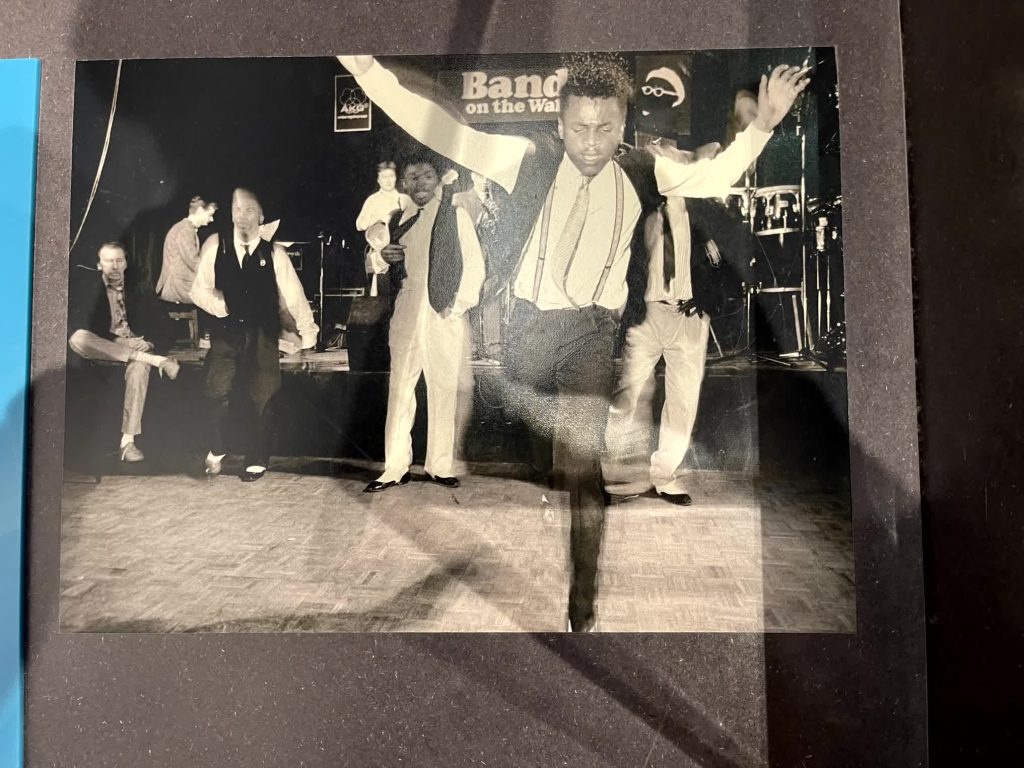
There was a display on Stephen Hawking. It was inspiring how determined he was to keep going with engaging with people (being on the Simpsons and Star Trek) and pushing the clarity of his vision for Astrophysics. He was buried at Westminster Abbey with Isaac Newton and Charles Darwin.
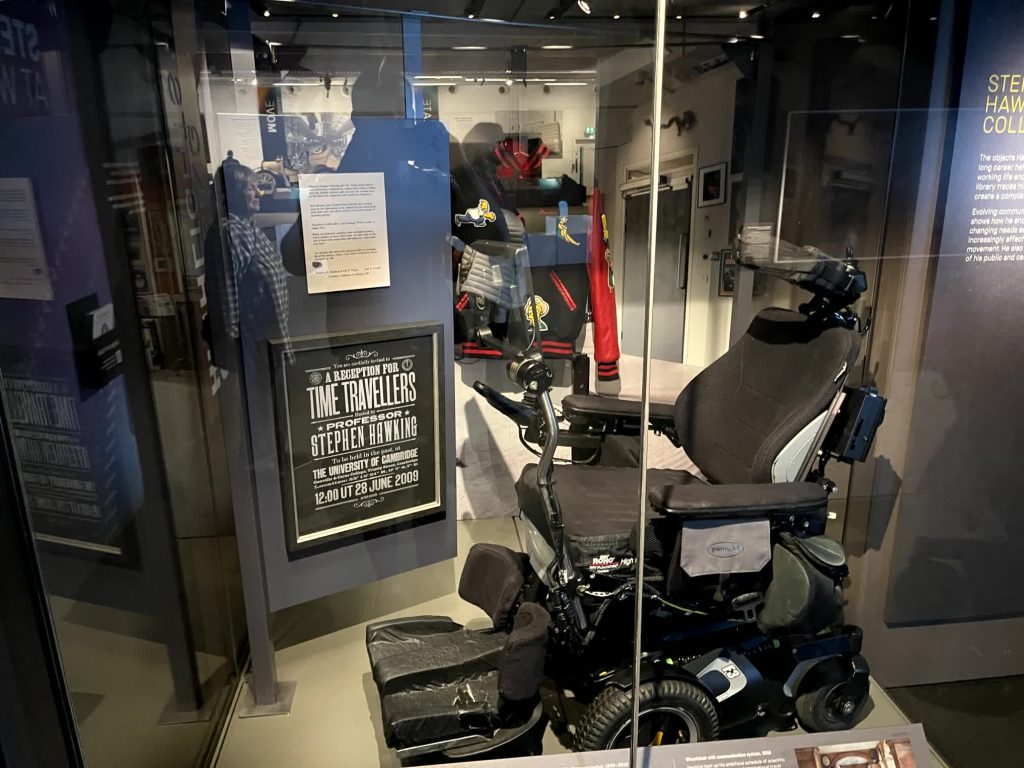
Nearby is a Sunday school just like at DPC. At DPC this seems to be a copy of English conventions, but I wonder if this was in part sold by social issues of the time.

The city of Manchester, the City where my grandfather was born, is filled Industrial Revolution era buildings, with little time for gardens and no daffodils.
It is not a place for poetic contemplation or aesthetic beauty, but for focus, productivity and people. It celebrates dynamism, progress, innovation and results.

My grandmother once said describing a relative “he had a proper job you know, in an office.” She came from 1940s Britain and at the time (the 1980’s) I took that to mean, she meant they escaped working the plough in a field. What’s clear to me now is that she meant that they escaped working in a factory or a mill. They had left Britain at a time when opportunities for education were not readily available, and unemployment was increasing. They came to Australia, leaving a war-torn England, to provide opportunities and a life for their boys.
